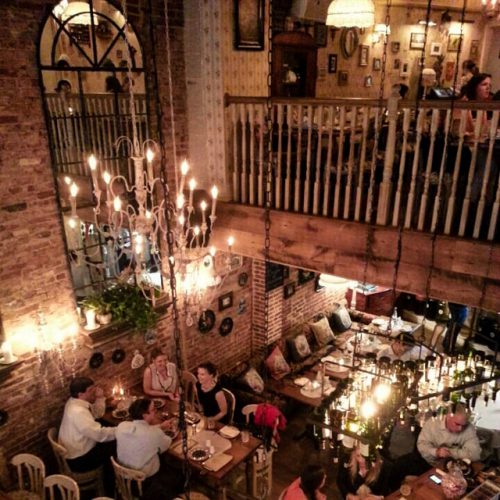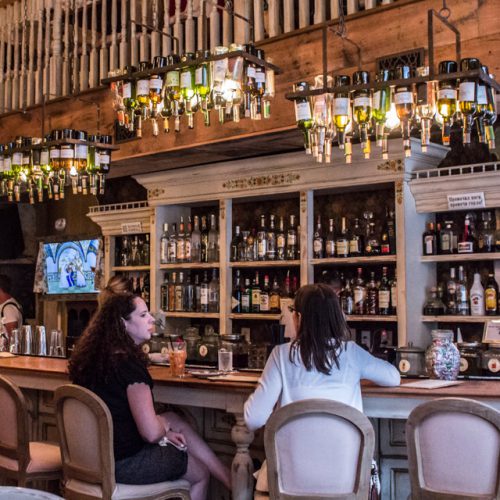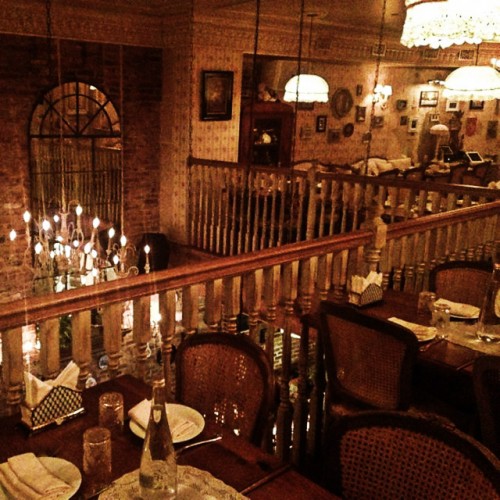By 2020 restaurant architecture and design will embody both high-tech advancements and low-tech hospitality, appealing to consumers hungry for modern flourishes like cashless payments as well as the old-fashioned human touch.
The lines between industry segments will blur further, with quick-service chains adopting the upscale decor of casual-dining competitors — localized through art and graphics — and full-service and fast-casual brands adopting tools to speed up service.
At the same time, operators’ efforts to reduce the costs of build-outs, cut waste and bolster their green credentials will have some repurposing old buildings and many investing in energy-efficient equipment and materials.


Restaurant Design Trends
Some of the best restaurant design is intended to go unnoticed. Sure, there will be eye-catching components — a cool mural, a quirky bathroom — but those aren’t as important as the layout, the lighting, the carefully cultivated mood. A well-designed restaurant won’t distract from the food, and especially not from the conversation. Instead, it will subtly contribute to one of those memorable evenings when everything clicks: the meal, the service and the warm vibes.
Architects and designers from six Washington firms that help make such evenings possible spoke with The Washington Post about what inspires them — which in turn might someday inspire home dwellers. Restaurant interiors often contribute to architectural and design trends. Designing for a restaurant, says Michael Francis of Queue Design Agency, is “this great little microcosm of an experience that allows you to experiment on a micro scale.”
“The idea behind a design movement I call ‘Mixxed’ has its roots deep in the history of America as a bubbling melting pot of unique and very different cultures,” explains Michael Suomi, a principal and VP of design at the firm. “Its translation to design involves the combination of unrelated and unlikely elements, global eclecticism, sensory overload, abundant graphics or artwork and sometimes an eye to the future or distant past. It’s Japanese manga meets Fidel Castro at a Stockholm Street food truck.” Also, the continued notion of an “authentic” dining experience: “Design hallmarks include historic accuracy, hand-craft, raw finished natural materials and endless detailing and accessorizing. Keith McNally has always seen the value of this approach in his perennially-popular Balthazaar and his newly opened Cherche Midi are a testament to this approaches bottom line strengths,”
“A trending towards a more crafts-focused, artisan aesthetic. “I think we’re all hungry for the hand of an artisan after so many years of Edison bulbs, black metal piping and other ‘industrial’ nostalgia,” says co-founder Maria Berman. “I would say Isa in Williamsburg reflects that idea, as does El Jac in Mallorca. It’s not really about maximal or minimal, but a homegrown and nurtured vision of specificity.”
“Authenticity instead of transportive themes, with local and sustainable design becoming major components in furthering that concept. “The farm-to-table concept is very popular right now, and speaks to people’s interest in healthy food and sustainability. The idea of eating local is very important and the design has followed that trend,” says Grant. Expect to see more reclaimed materials, and design elements that are inherent to the actual spaces.”


Restaurant Design Trends 2018
The rustic-hewn, Anthropologie-inspired era of restaurant design is over, as designers look toward sleek surfaces, rich woods, and greenery to adorn their spaces in the coming year. AD PRO spoke to several masterminds of restaurant design to get their take on what you’ll be seeing everywhere in 2018. Prepare for lots and lots of wood!
Turns out, quality food and convenience will only get you so far; thoughtful, unique interior design is critical in getting customers through the door. That’s why we highlighted the five best restaurant design trends you’ll be seeing here in the U.S. and across the globe in 2018. (Bonus: all of them are easy to incorporate and are sure to delight customers.)
Here are our top 5 restaurant design trends for 2018:
- Minimal Yet Meaningful
- Unique Wallpaper Accents
- More Color
- Warm Woods
- Multi-Use Seating Arrangements
Hygge (pronounced HYOO-guh) is a Danish word and concept, and it doesn’t have a direct translation to English, but it roughly encompasses the feeling of cozy contentment. The hygge trend has blown up recently, and it’s finally starting to spread to the foodservice industry. Some restaurants are attempting to make their dining spaces feel more cozy, inviting, and hygge by using candles, warm and rustic elements, and comfortable furniture.
The Industrial Look Is Out
“All the reclaimed wood, bare light bulbs and exposed brick feels overdone. These were all definitely design choices that were part of a huge trend but are starting to feel dated and overused. There is a very monotone feeling to walking into a space that’s all wood, exposed brick and off-white.”
~ Andrew and Briana Volk,
owners of Little Giant and Portland Hunt + Alpine Club








